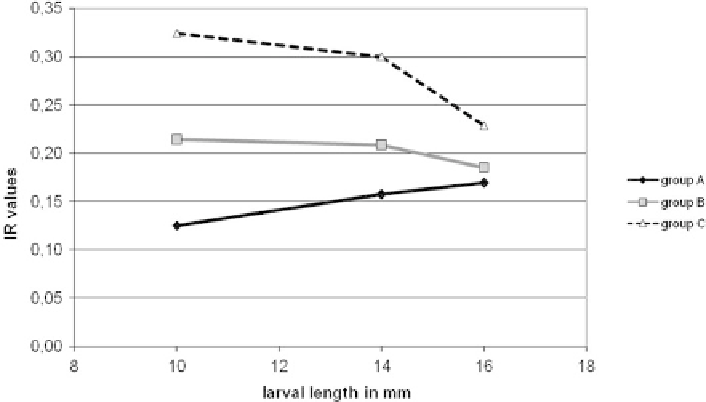Biology Reference
In-Depth Information
After each treatment, larval lengths in millimeters were measured. Data from
each trial, group, and time interval were statistically analyzed using
T
tests to
cluster larvae by length and to assess the inactivation rate (IR
time necessary
for the inactivation of 1% of larvae under fixed treatment conditions) for each
length group. IR values were expressed in hours for marinating trials and in minutes
for thermal treatments. The discriminant mean lengths for marinating treatments
were 10, 14, and 16 mm, whereas the discriminant mean lengths for thermal
treatments were 15, 18, 20, and 22 mm.
¼
26.3 Results
All examined larvae belonged to the
Anisakis
genus. The relationships between IR
values and larval lengths for the marinating trials are reported in Fig.
26.1
. Larval
resistance to the harsher treatment (group A) was directly proportional to length,
while shorter larvae were more resistant to the combined effect of NaCl and organic
acids in the milder treatments (group B and C).
With regard to thermal treatments, Fig.
26.2
indicates, as mentioned above, that
47
C produced an amount of larval inactivation within an appropriate time interval
for appreciating the variability of responses. The IR values as a function of length
and the IR mean values for all larvae (IR tot) are reported in Fig.
26.3
. Only the
group with a mean length of 22 mm had an IR value greater than IR tot.
Fig. 26.1 IR values of each group subjected to different marinating treatments (groups A, B, and C)
with respect to larval length

